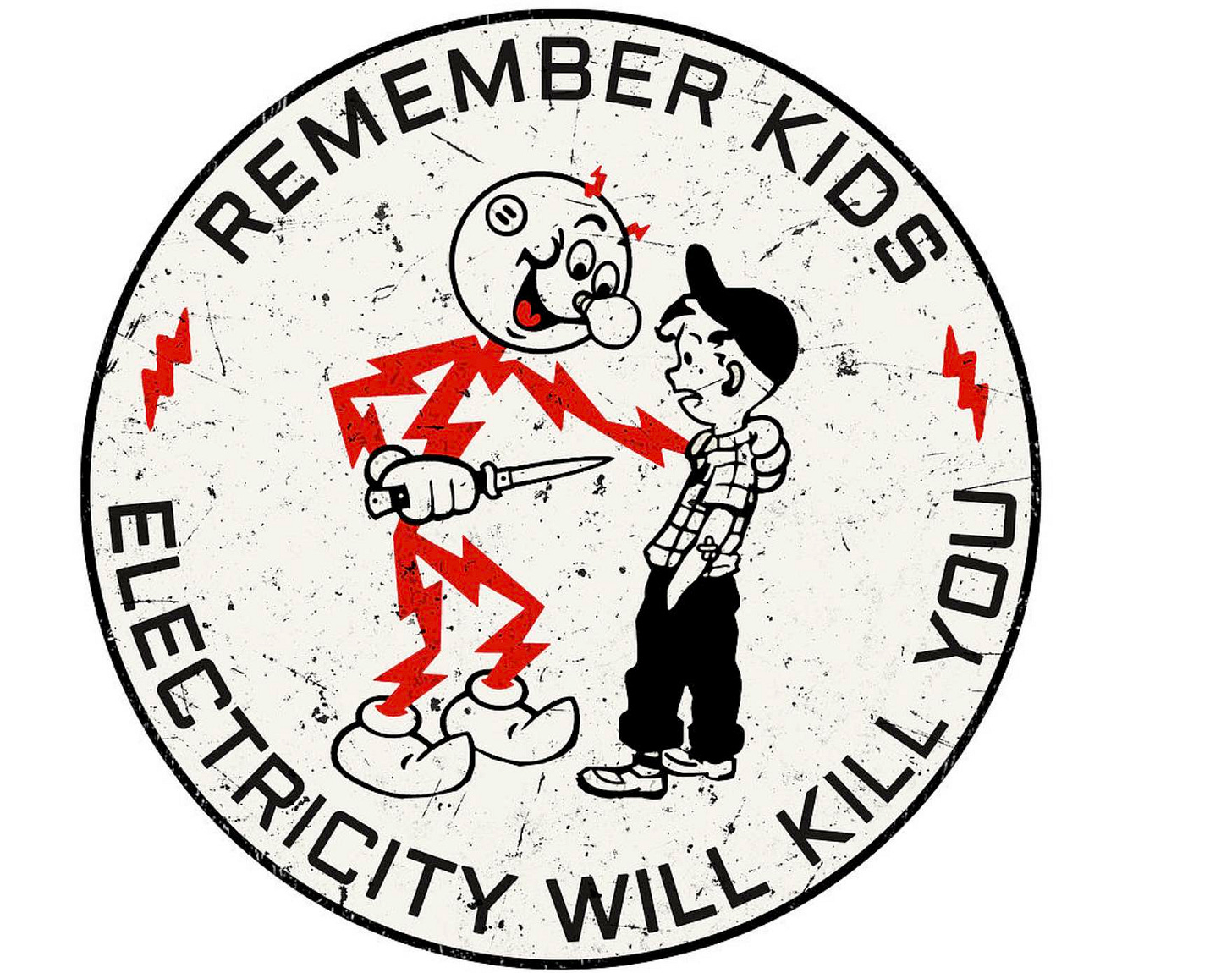Reddy Kilowatt

Seeing heavy industry sold using cartoon characters is something of a surprise. We can all remember consumer products sold that way—those of us who were kids in America, at least. Cartoon branding mascots have served to inspire youngsters to exhort parental purchases, for instance, in the grocery-store cereal aisle, with all the sugary treats packaged in boxes emblazoned with colorful and fun images of tigers, rabbits, toucans, or pixie Irish stereotypes approximately from County Cork, home of almost all stereotypical Irishmen.
We’re familiar also with cartoon spokes-characters like Ronald McDonald for fast food, Charlie the Tuna for canned fish, Elsie the Cow for cheese, and maybe even Serta Counting Sheep for mattresses. But today we’re concerned with a particular mascot for an industry where we might not expect cartoon representation to be adult enough: electricity.
As electrification once penetrated American cities and towns by the 1920s, some 90 percent of rural farmsteads still went without. A commercial manager for Alabama Power Company (APC), Ashton B. Collins, Sr., envisioned an advertising campaign to make rural electrification more appealing and less frightening to rural residents. Thus was his brainchild born, Reddy Kilowatt. APC copyrighted the figure at the time, granting Collins use of it into the Great Depression. A refined cartoon image was trademarked in Collins’s name in 1933, and licensed throughout the United States and then other countries around the world. The mature image was introduced in the post-war period, created under cartoonist Walter Lantz.

Licensing continued to expand, and Reddy enjoyed a career adorning public relations campaigns for many investor-owned utility companies. Collins had conceived of the character as an ambassador not only for electric power, but also of free-market capitalism. By mid-century, Reddy was used to convey messages explaining electric power generation, as well as electric safety and convenience. By the late 1960s and ‘70s he would be used to spread messages about conservation, keeping up with trendy environmental concerns.
Here was one of his ad jingles:
The Wikipedia page has a decent longer history of Reddy and his career.



You can't help but love the smiling cartoon character pointing a dagger at a kid.
Today’s special animal friend is the star-nosed mole, Condylura cristata. It is about the size of a hamster: about 7 inches long and weighing around 2 oz. This burrowing animal has 22 tentacle-like appendages on its snout. On these appendages are about 25,000 Eimar’s organs, a kind of touch receptor that is also found on other moles.
https://www.youtube.com/watch?v=2iM6EPWZKPw
The “star” is about 1 cm in diameter. It is densely packed with the tiny Eimar’s organs. Their touch receptors are organized in a way that is similar to light receptors in a mammal’s eye. Those on the periphery get a quick sense of an object, while those nearest sense have precision focus. Studies have shown that more than 50% of the animal’s cerebral cortex is devoted to interpreting inputs – touch, not smell! - from the nose.
https://www.youtube.com/watch?v=W-56nE20vrI
The upshot of this is that the star-nosed mole can sense and consume prey incredibly quickly, as fast as 120 milliseconds from the first touch. This is the fastest of any known animal. It eats a lot of worms and leeches when burrowing in moist earth. It can also swim, and it can smell underwater by emitting tiny bubbles and then re-inhaling them, laden with scent molecules. In the water, they eat a variety of aquatic macroinvertebrates, including the larvae of caddisflies, stoneflies, and dragonflies. They also eat small crustaceans and fish.
https://www.youtube.com/watch?v=q-er-MB3V90
Native to the Northeastern U.S., southeastern Canada, and a bit of the Atlantic coast almost as far south as Florida, the star-nosed mole is active day and night and all year round. In addition to burrowing and swimming, they are found on the surface more often than most other moles. They mate in late winter to early spring. Females give birth to four or five young after about 3 months. The babies are about 2 inches long, hairless, and helpless for the first two weeks. They are independent after 30 days and full-grown in about 10 months.
https://www.youtube.com/watch?v=20_fD6vOM2Q
Predators of star-nosed moles include birds of prey, foxes, mustelids, domestic and feral cats, and skunks. Large fish such as the Northern Pike can eat them in the water. So can bullfrogs. The lifespan of the star-nosed mole is three to four years. They are a species of Least Concern.